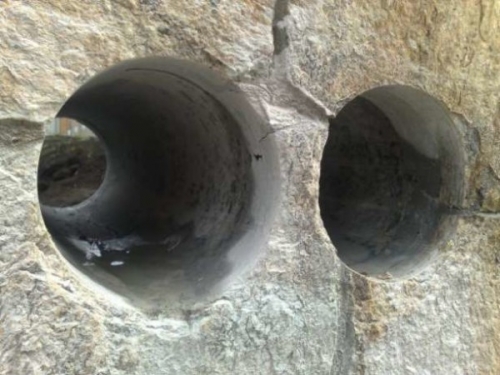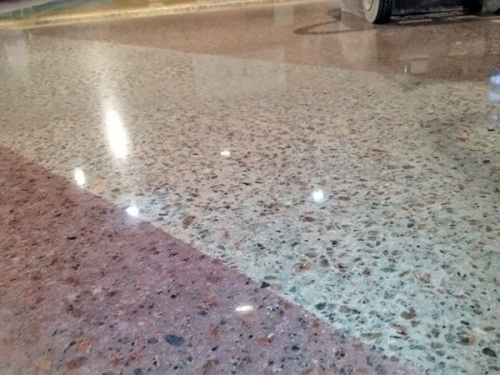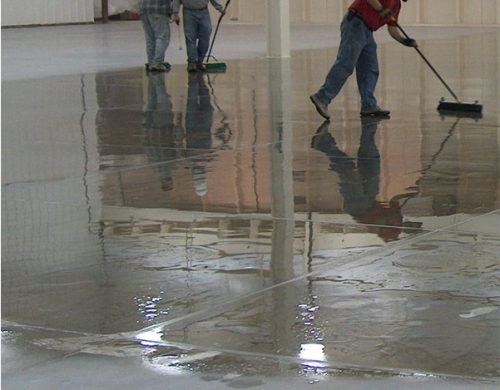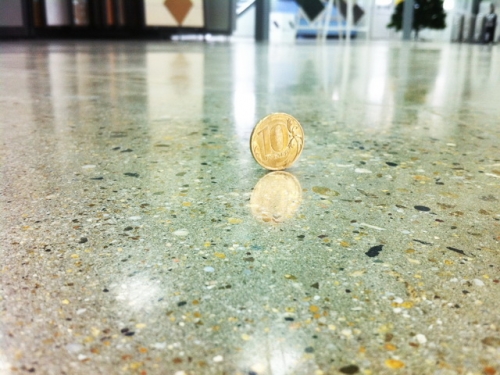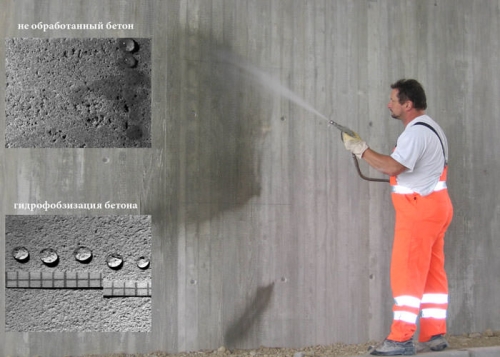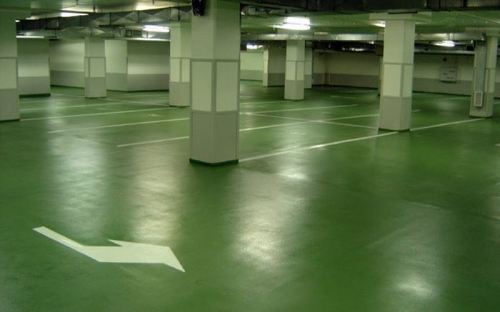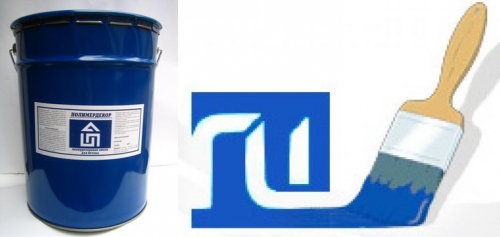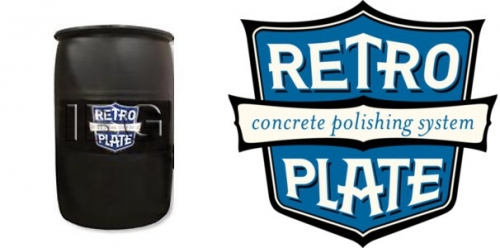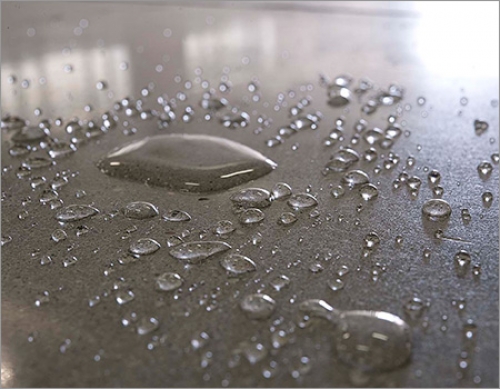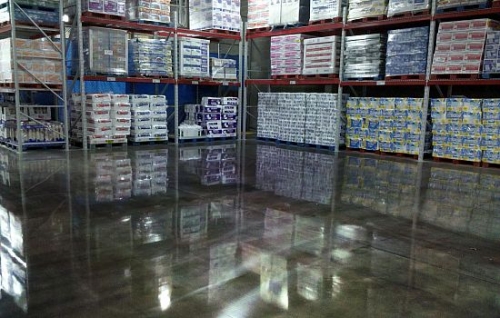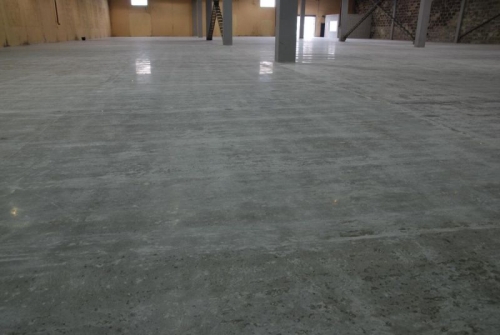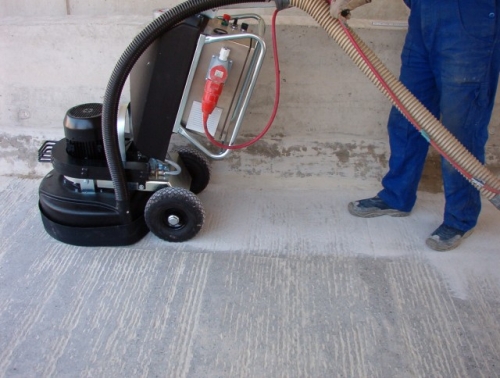You were told that the house from the beam is not necessary to hemp, they say, everything is perfect there ...
|
|
There are several varieties of concrete solution, which differ as in ... |
In Khrushchevs and other buildings of the Soviet era, low problems are considered a big problem ... |
Postering for concrete: characteristics and features of application
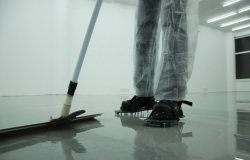
At the beginning of the development of technology for casting reinforced concrete structures, builders measured with porosity of the material. Today, the situation has radically changed, modern impregnating compounds have appeared, which can improve the technical and operational properties of concrete products.
In the article we will tell you what concrete impregnations are, what is their purpose, how to choose and apply the material to the base.
- The need to process the concrete surface with strengthening impregnation
- The scope of the impregnation for concrete
- Classification of concrete impregnations by chemical composition: organic and inorganic modifiers
- Varieties of impregnation for functional purpose
- Review of concrete impregnations of different manufacturers
- Tips for choosing concrete impregnation
- General requirements for waterproofing and strengthening by impregnation
- Impregnation technology: stages of work
The need to process the concrete surface with strengthening impregnation
Concrete impregnation liquid hardening, which contains special adhesive substances that significantly strengthen the upper layer of the surface. The surface of concrete itself has a porous, loose surface. The presence of a micropor leads to two basic defects in reinforced concrete:
- low hydrophobicity through the pores seeps moisture;
- the insufficient density of the material, which leads to a decrease in the strength of the finished structure.
Modern technologies for processing reinforcements allow you to turn the porous surface of concrete into a waterproof stone. This is especially true in the construction of monolithic walls, concrete foundations and other supporting structures that are in contact with moisture.
So, concrete impregnation performs the following tasks:
- protection of the surface of the product from negative environmental factors and chemicals;
- increasing the strength characteristics of concrete;
- exhausting concrete structures;
- an increase in the wear resistance of screeds and plates;
- strengthening aged products and structures;
- improvement of the appearance of the concrete floor;
- increasing the life of reinforced concrete structures.
The scope of the impregnation for concrete
Impregnation for concrete floors, foundations, walls and other structural elements is used in various sectors of activity and arrangement:
- exhibition and trading halls;
- storage facilities;
- car services, car wash and parking;
- open concrete sites;
- livestock farms;
- production workshops;
- housing and administrative structures.
Depending on the type of design and the desired result, the optimal type of primer is selected.
Classification of concrete impregnations by chemical composition: organic and inorganic modifiers
By the composition of the impregnation for concrete, they are divided into two types of compositions:
- organic mixtures;
- inorganic modifiers.
Organic impregnations Liquid compositions made on the basis of polyurethane, epoxy resins and acrylic. Primeries of this type have the following principle of action: the connecting element fills the pores of concrete and endows the surface with the ability to push water, resist aggressive environments. In addition, such impregnations provide concrete and make the structure more durable.
Important! Polyuritan impregnation for concrete is considered universal and copes simultaneously with all the tasks set before the primer. Compounds based on other substances are highly specialized
Inorganic modifiers(silicate impregnations) have a different principle of action. The material does not fill the microporas of concrete, but reacts with external molecular compounds that are dissolved and become inert to other reactions. Concrete acquires a number of additional qualities: water resistance, strength and dusting.
Varieties of impregnation for functional purpose
Hardening impregnation for concrete
In most cases, strengthening impregnations are made on the basis of inorganic compounds of silicate primer compositions. The protective layer is not formed on the surface of concrete, since the impregnation penetrates deeper and changes the structure of the material. Thanks to this property, the primer does not exfoliate and ensures high wear resistance of the product with its full diluting. The strengthening primer is applied to ceilings, walls, supports, floor and other structural elements.
Deep impregnation of concrete increases the strength of the surface layer two to three times
The traditional potassium and sodium impregnations of deep penetration was replaced by new streaks based on lithium silicates. Concrete, treated with lithium primer, is resistant to humidity and mechanical abrasion, and is also not subjected to dust formation.
Important! When using impregnations based on lithium, the possibility of the appearance of heights on concrete is excluded. After one and a half to two hours after surface processing, the structure can be operated
Water -repellent impregnation for concrete
The action of hydrophobizing impregnations is based on their penetration into cracks and pores of concrete. Such processing protects the surface of the structure from moisture penetration deep into the material and from the effects of a number of negative factors:
- microorganisms, mold and fungi;
- UV rays;
- the appearance of cracks and heights;
- salt/acid precipitation.
Water -repellent impregnation for concrete for external work increases frost resistance and improves thermal insulation properties of reinforced concrete structures
Hydrophobizing impregnation protects the structure from the inside, which is especially important during the repair of monolithic walls and basements. However, even such processing does not protect the foundation from the penetration of groundwater. This problem can be solved by applying a set of measures to waterproof concrete structures.
The mixtures of this class are represented by a wide range in the construction market. The most effective and expensive are two -component compositions designed to build hydraulic structures, such as pools.
Impregnation for layering of the surface
Postering for concrete from dust is used in the arrangement of warehouse/industrial premises, exhibition/retail rooms, garages, corridors, stairs, etc. Discanishing the concrete floor, ceiling or walls is often carried out before treating the surface with polymer coatings, plaster or LKM.
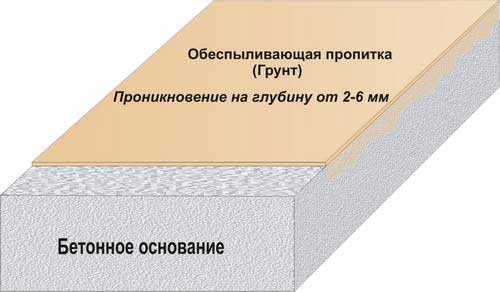
The action of anti -frying modifiers:
- elimination of dust formation;
- protecting the concrete surface from destruction, exposure to alkalis, acids and oils;
- increase in wear resistance and extension of the operational period of the structure;
- the processed surface does not need special care.
Staining compounds for concrete
To stain concrete, you can use ordinary paint or special color impregnation. The surface painted with LKM is less durable and, with constant passage/travel loads, is cracked and irradiated.
Color impregnations penetrate into concrete to a depth of up to 3 mm, so that the coating does not lose its color for a long time regardless of the intensity of the effects of different loads.
Important! The concrete surface, covered with a painting composition, should additionally be treated with water -repellent protective impregnation
Review of concrete impregnations of different manufacturers
We describe several concrete impregnations that are popular and have won a good reputation among builders.
Serving soil for concrete floors Tread It has high resistance to the effects of chemical reagents, strengthens the concrete surface and drains it. Additional action:
- provides respiratory properties of reinforced concrete coating;
- improving the coupling between new and old concrete.
Impreting the tread is successfully used to arrange floors for various purposes: concrete roads, runways, pedestrian paths, paving slabs, etc. The strengthening composition is produced in buckets of 20 liters, the price per 1 liter is about 180 rubles.
Primer Xtreme Hard Inorganic waterproofing impregnation for concrete. The concentrate consists of silica dust, which penetrates deep into the material and interacts with the cement components of concrete. As a result of reactions, crystallization mass and partitions between the pores are formed.
Important! Xtreme Hard concentrated impregnation, which should be diluted with water in a ratio of 1: 4 before use
Retroplaite Serving impregnation for concrete (price for 1 liter of about 400 rubles). The modifier is used to strengthen and drain low -blade concrete (less than 300), old and new mosaic concrete. When working with impregnation, retro -players must be taken into account several nuances:
- the composition is applied at a temperature of at least +5;
- an impregnation cannot be applied to unrealistic concrete (after laying it should pass at least 14 days).
FuckingConcreting for concrete specially designed for processing floors at production facilities. The modifier protects concrete slabs from high mechanical/transport loads and the effects of aggressive environments.
The technical and operational characteristics of the impregnation occurred:
- operating temperature range from -40C to +80C;
- material consumption of about 0.3 liters per m2;
- drying time to 6 hours at a temperature of +20C;
- guarantee shelf life of 6 months;
- penetration of 5-10 mm;
- the cost of impregnation is 170-190 rubles/liter.
Monolith 20thUniversal impregnation for concrete. You can buy a 10 liter modifier canister at a price of 1300 rubles. The monolith of the 20th composition on the water-based, environmentally friendly and not combustible. The impregnation acts on the concrete coating as follows:
- reduces the formation of shrinkage cracks/warning of concrete;
- an increase in the water resistance of concrete by three brands;
- increasing wear resistance and hardness by 30%;
- impregnation penetrates 20-30 cm deep into concrete, preserving the ability to breathe;
- exhausts concrete;
- gives resistance to oil products, fats and organic acids;
- improves adhesion of paints and epoxy coatings;
- increases the durability of paints applied to processed concrete.
The impregnation consumption monolith 20-m 1 liter per 3-5 m2 (depends on the condition and porosity of concrete).
Tips for choosing concrete impregnation
Here are some recommendations that will help you choose the right concrete impregnation:
- Silicatical impregnation (chemical hardening of concrete) are suitable in the following cases:
- disgaming with minimal costs;
- the floor will be subject to hard operation (high temperature effects, dragging heavy objects);
- the concrete surface is rough and has significant irregularities.
- Epoxy (polymer) impregnations is best used in cases:
- intensive effects on the coating of chemicals;
- high requirements for the aesthetic type of concrete coating are put forward;
- disgaming the mosaic floor.
Important! Silicature modifiers are not effective on mosaic concrete coatings
General requirements for waterproofing and strengthening by impregnation
- The concrete base must be dried. Water in the pores is unacceptable.
- The optimum air temperature for applying an impregnation +20-25C, air humidity is not more than 90%.
- The temperature of the concrete surface should be at least +10C (some impregnations are effective at lower temperatures).
- To work, you need to use rollers or brushes that are resistant to solvents.
- Before applying hydrophobizing compounds, it is advisable to wipe the concrete floor with quartz sand of small fractions. This will give the surface of anti -slip properties.
- Visible defects in the concrete surface should be removed polished chips and cracks.
- When working, you need to observe safety precautions and use personal protective equipment (gas mask respirators, rubber shoes, clothing of fabrics and mittens).
Impregnation technology: stages of work
Let us consider in stages, how to strengthen concrete yourself:
- Prepare the necessary materials and tools:
- impregnation;
- roller/brush on a long handle;
- individual protection means;
- capacity.
- Prepare the basis for impregnation:
- According to the instructions, prepare a primer. In two -component impregnation, mix all ingredients with a construction mixer. The primer must be done in small portions, as many compounds are effective if they are used up for one hour.
- Apply impregnation to the surface. It is necessary to control so that puddles do not form.
- A primer of deep penetration should be applied in stages, making the intervals between layers. Subsequent processing is done when the previous layer has lost his stickiness. Usually, the second layer is applied an hour after the first, and the third layer two hours after applying the second.
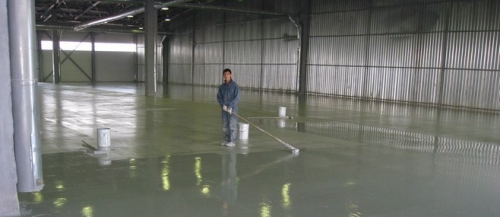
A minimum of 12-14 hours should pass until the impregnation has completely dried.
Video: applying concrete impregnation with your own hands using a spatula
Video: drainage of concrete floors, grinding and impregnation.

